In this article not only do we take a look at 5 of the best language learning apps for kids, but we are also going to talk about what things to look for when evaluating these learning apps.
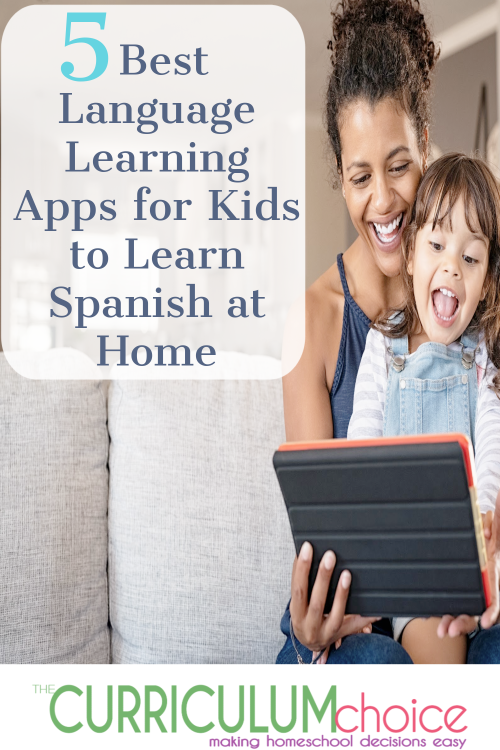
{Disclosure: I received free access to the FabuLingua language learning app and was compensated for my time in writing this review. All views are my own and I was not required to write a positive review.}
How Childrens’ Language Learning Apps are Simplifying Language Learning at Home
As homeschoolers, if we wanted to teach our children Spanish, we had to take them somewhere for language classes with other homeschooled children or a private tutor. This was not only expensive, but logistically challenging for a homeschooling family with multiple children.
Textbooks existed, but unless you spoke the language yourself, they were not much help to you or your kids. Thankfully, Apps and online learning options with audio featuring native speakers has made it possible to learn just as much for much less money and from the convenience of your living room!
Key Ideas to understand before evaluating the best language learning apps for kids to learn Spanish at home
Before launching into a review of apps, let’s first review what modern language learning science tells us are the most important elements when acquiring a new language:
1. Comprehensible Input
Comprehensible Input is language input that can be understood by listeners, even if they can’t understand all the words or structures in it. When the input is comprehensible, you understand the gist of what’s being said.
One way to obtain comprehensible input is by watching tv or movies in the target language. One of the most powerful methods of delivering comprehensible input is through reading simple illustrated children’s books. Another way is through a story-based app like FabuLingua. With an option like this your children can learn independently, and you don’t need to know any of the language!
2. Avoid Stress or Boredom
If children are stressed or bored, they are not going to learn as effectively.
Traditional classroom foreign language instruction consists of output-heavy, teacher-led instruction. These teaching methods include regular testing and pressure, which do not support language acquisition!
For kids to effectively learn a language it needs to be in a low stress, fun and engaging atmosphere. Studies show us that learners with high motivation, self-confidence, a good self-image, and a low level of anxiety are better equipped for success in second language acquisition.
3. Make it Story-Based
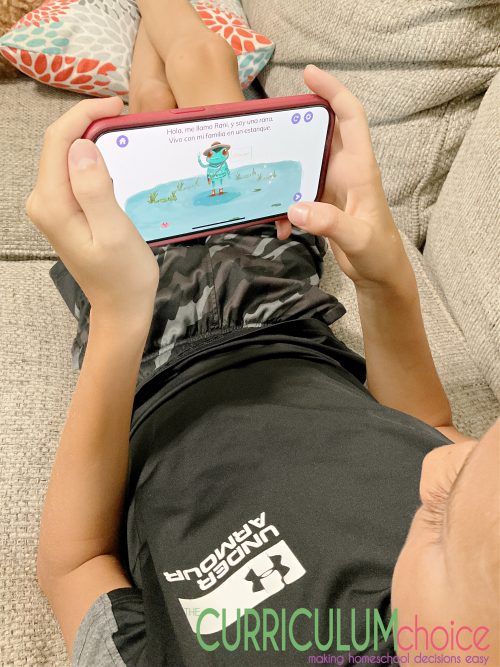
We all know that reading is the best way to increase a person’s vocabulary in English… well it’s just as powerful for learning Spanish! Storytelling is the art of narration. Something that has been done since ancient times. Storytelling is a powerful teaching tool, one that is under recognized.
“We remember things best when they are organized with everything else we know, when they come with stories attached, rather than as isolated bits of information.” ~ Frank Smith
Fun Fact: Facts are twenty times more likely to be remember if they’re told as part of a story!
4. Respect the Silent Period
In the language learning process, there are five known language acquisition stages. In the first stage, the pre-production (the Silent Period), learners do not create any output themselves, other than basics like yes or no, or pointing. Linguistic researches say this early silent stage is a biological necessity of the brain.
In this first stage of language learning, the learner actively listens, and their brain undergoes the beginnings of a neural rewiring to enable them to start to process this new language. From the outside, it’s hard to see any immediate progress at this stage, so it is often rushed or overlooked by those teaching the language.
5. It’s Not All About Grammar
Like with learning our first language, we need lots of exposure to comprehensible input, without the logistics of grammar. Kids need a really solid foundation with the words and their meanings before overwhelming them with grammar. Doing this too soon, can kill the joy of learning a new language, and can cause kids to want to give up.
5 Best Online Language Learning Apps for Kids
1. FabuLingua
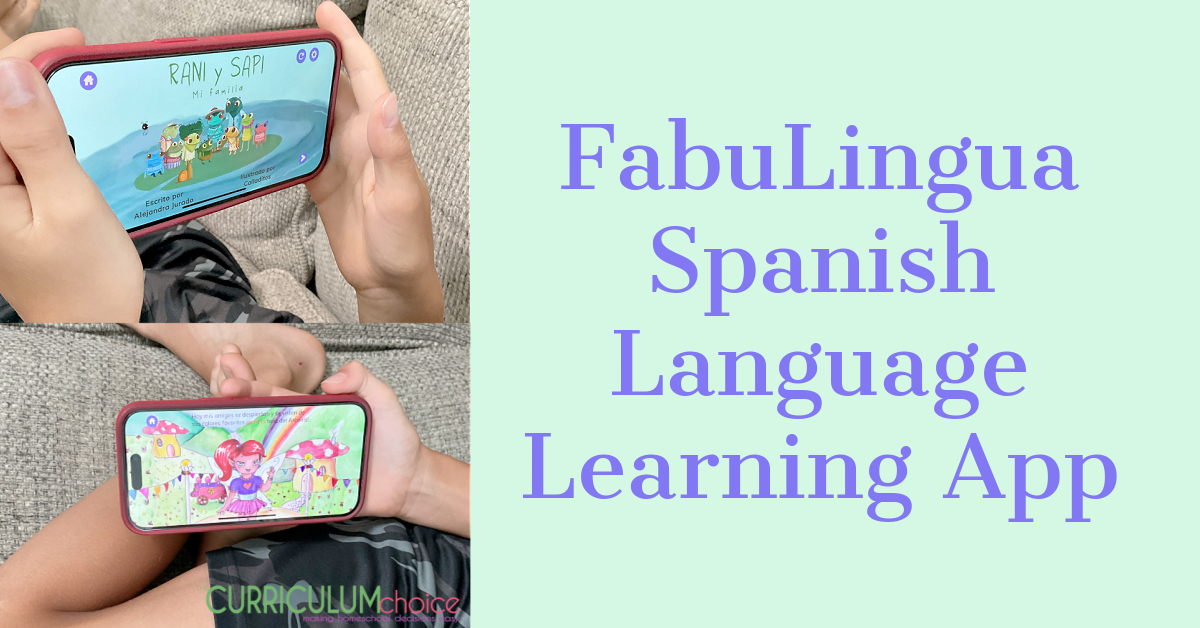
FabuLingua matches all the criteria mentioned above. It is a story-based app where kids (ages 2-10) listen and follow along with the stories being told. Every page of the story has something kids can interact with. Things like moving characters and playing mini-games. My grandson and I loved the one where you help the abuela whack flies with a stick because I actually walk around with a fly swatter in our house whacking the flies!
Beyond just reading along with the stories, FabuLingua helps kids develop their pronunciation by using CopyCat mode in each story. In this mode the sentences are read to them a piece at a time, then they record themselves repeating each short section.
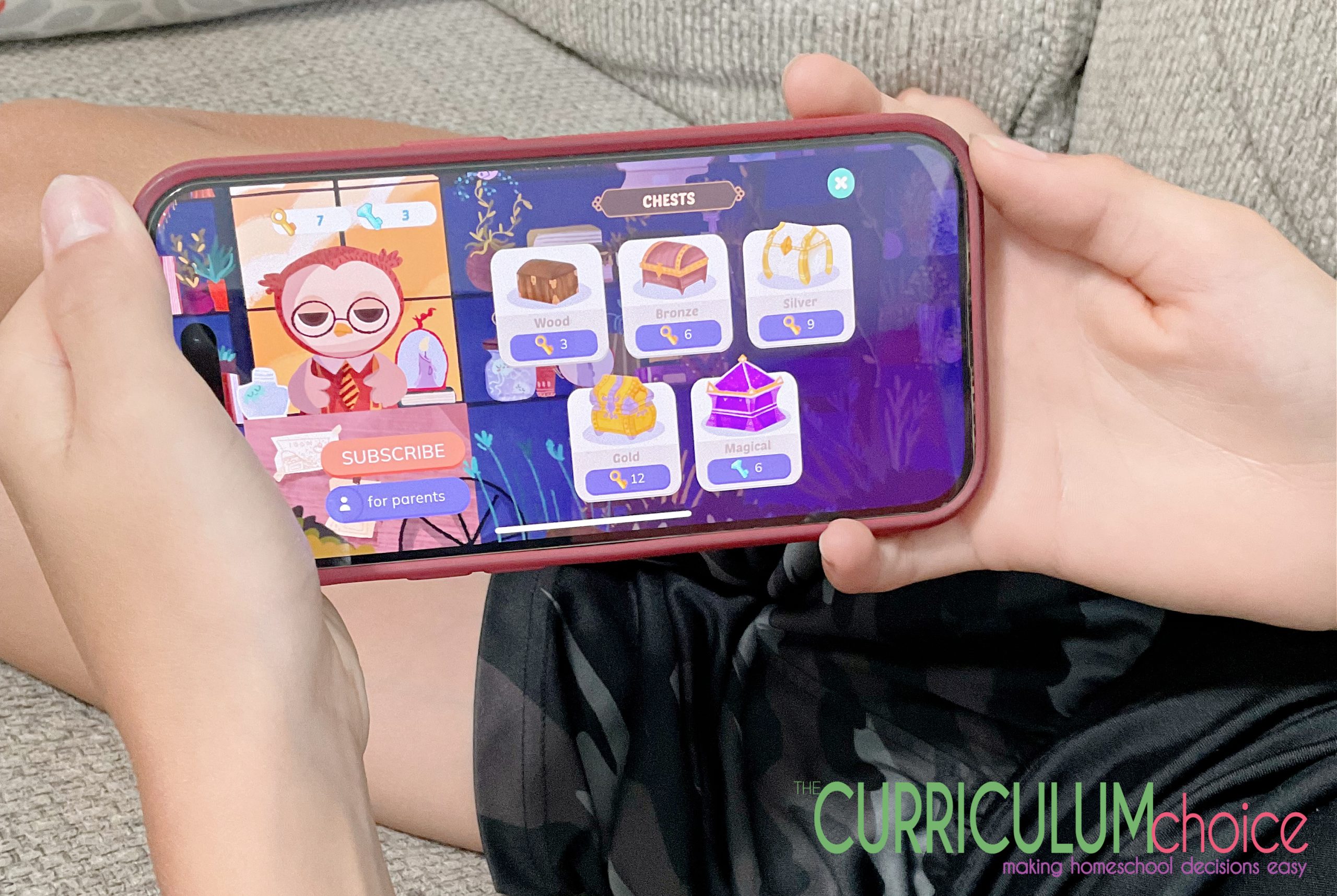
Everything about FabuLingua, from the use of illustrated children’s stories that are interactive and lightly animated, to the fun and exciting games that serve to reinforce and expand the vocabulary learned in those stories, to the immersive mobile game world in which the stories live – a game that involves exploration, leveling up, and earning rewards like exciting stickers from the stories – all of it is designed to grab and keep a child’s attention by making it fun and engaging.
2. Duolingo
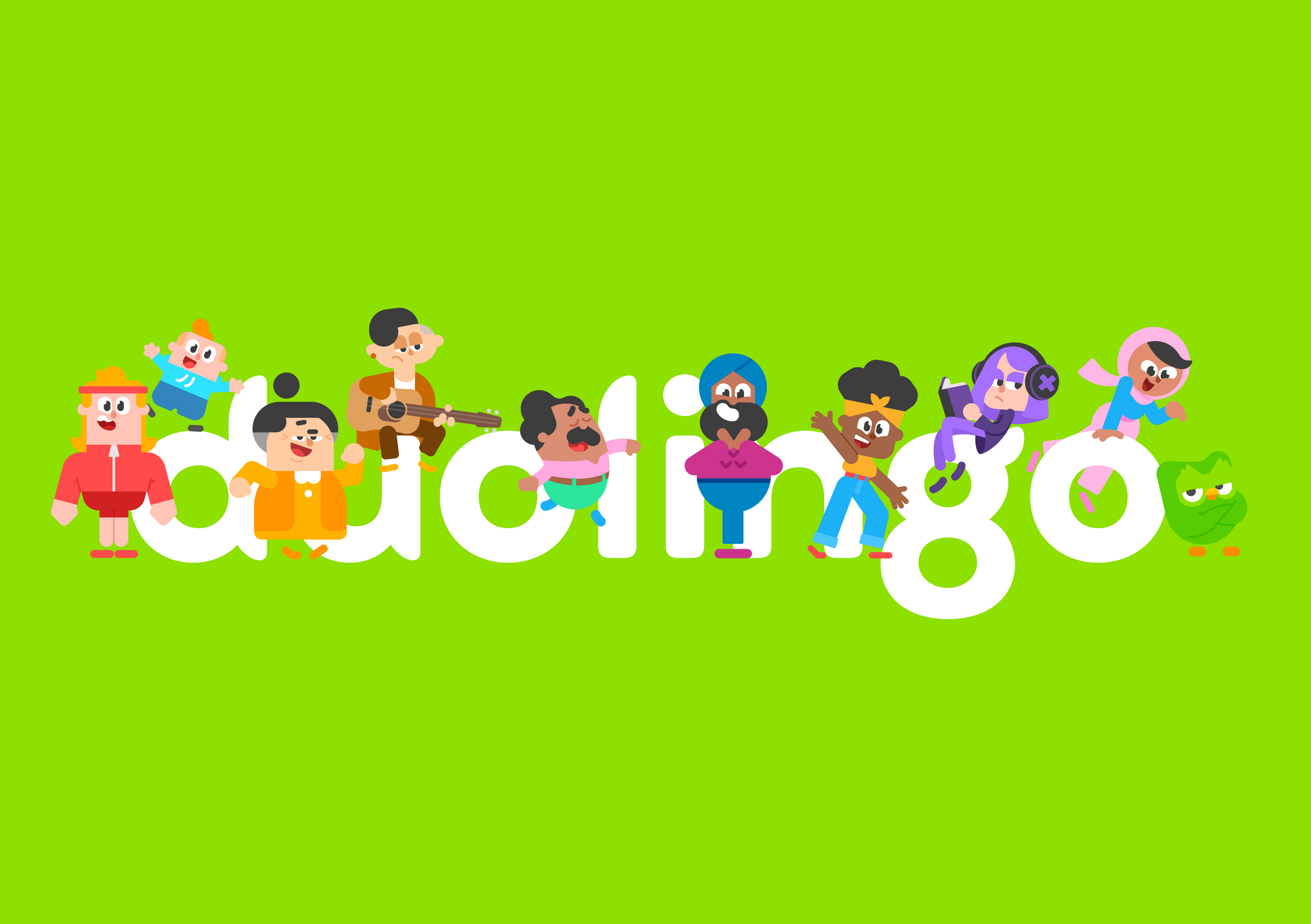
Duolingo is a game-based language learning app. Beginners first choose a language – Duolingo offers over 100 courses in more than 40 languages!
Instructional practice activities cover all four skills (reading, writing, speaking, and listening) and require students to go back and forth between the target language and their self-identified native language. Students can also practice conversational, situational language skills in the Stories section.
Duolingo also includes tracking things like their number of days in a row and their level of experience, offering rewards for these accomplishments. Additionally, students can see the number of words they’ve learned and level of mastery. The program also identifies vocabulary words that require more practice as well as words that are cemented in long-term memory.
3. Endless Spanish
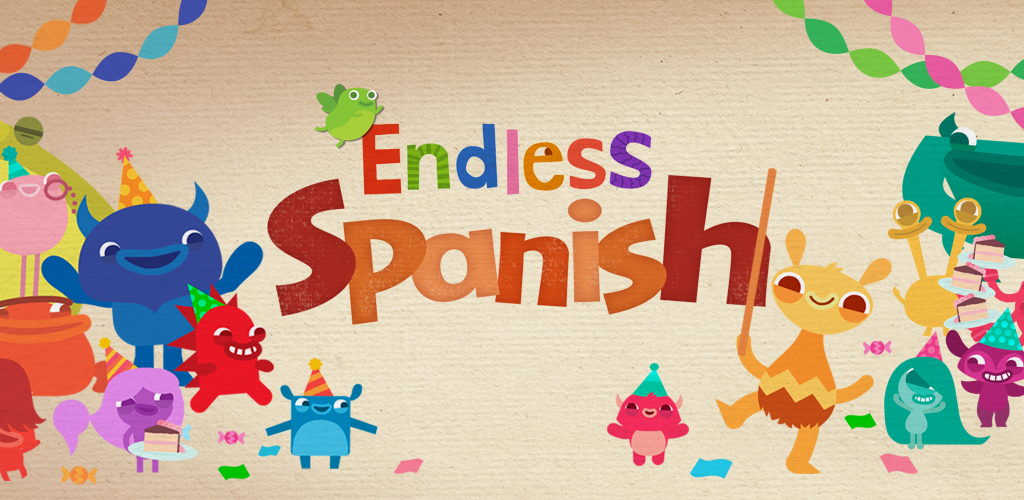
Endless Spanish is a language app for kids that offers an introduction to common Spanish words with silly and charming monsters. They act out the meaning of the new Spanish words, using hilarious antics shown in short video clips. This language learning app for kids also uses animated letters and words to encourage kids to learn new Spanish words.
4. Little Pim
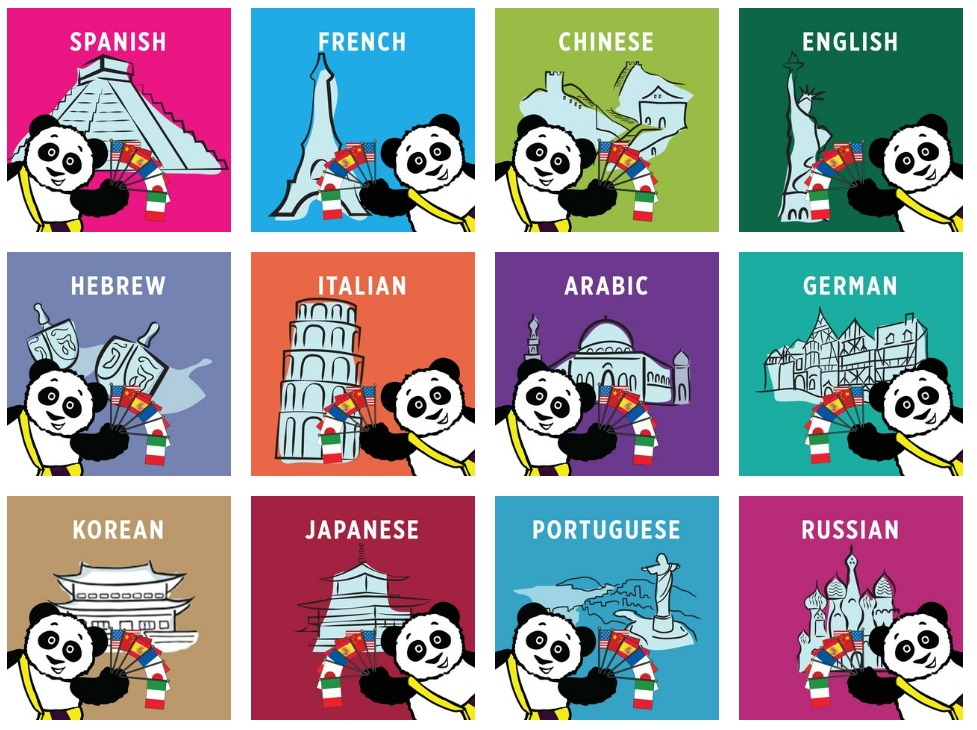
The Little Pim is a language app for kids. Designed for kids under the age of 6, Little Pim is based on a collection of language learning videos which focus on teaching children the essential building blocks of a language. Children love following along with Little Pim, the adorable cartoon panda bear who serves as their teacher.
Little Pim is available to teach 12 different languages including Spanish, French, Chinese, German, Italian and more! The curriculum teaches children 360 words that they can utilize in their daily lives. You can create an account for each of your children so you ca track their progress.
5. Gus on the Go
Gus on the Go is a series of language learning apps, sold separately, one for each of 30+ languages!
With Gus on the Go kids can learn Spanish, French, Greek, Hebrew and more by diving into a classic story with a silly twist. Meet new characters, make them move and explore a new language with a fun and familiar story! Each app contains 10 lessons with basic vocabulary words, using interactive games to help kids learn and have fun at the same time!
More Language Learning for Kids
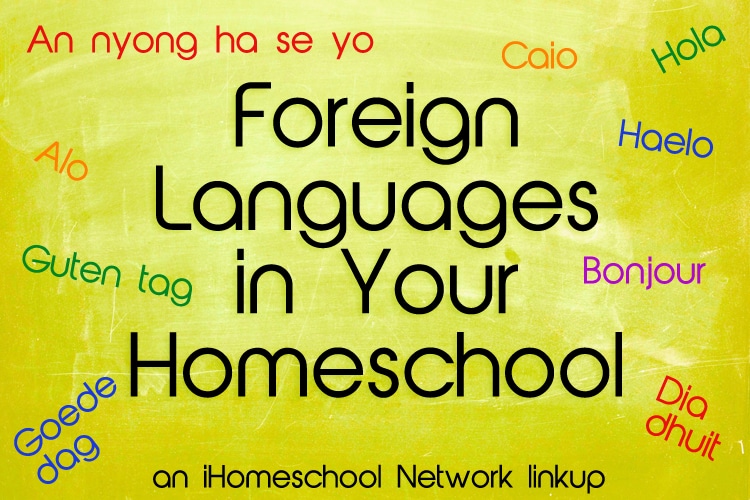
Foreign Languages in Your Homeschool – this is a collection of language learning resources reviews from here at TCC. At home language learning in Spanish, Latin, French, and Greek.
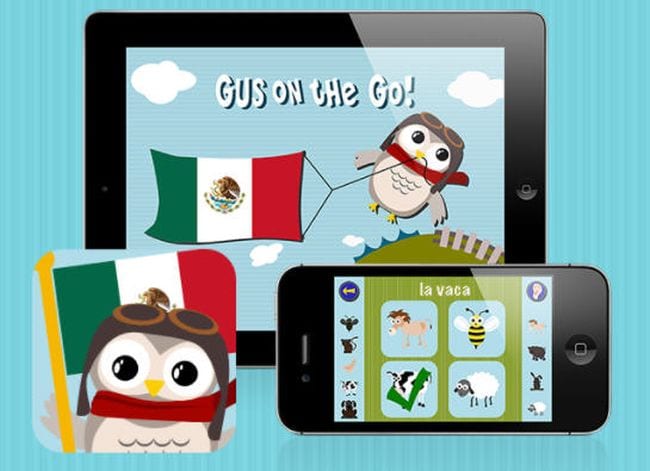

Leave a Reply